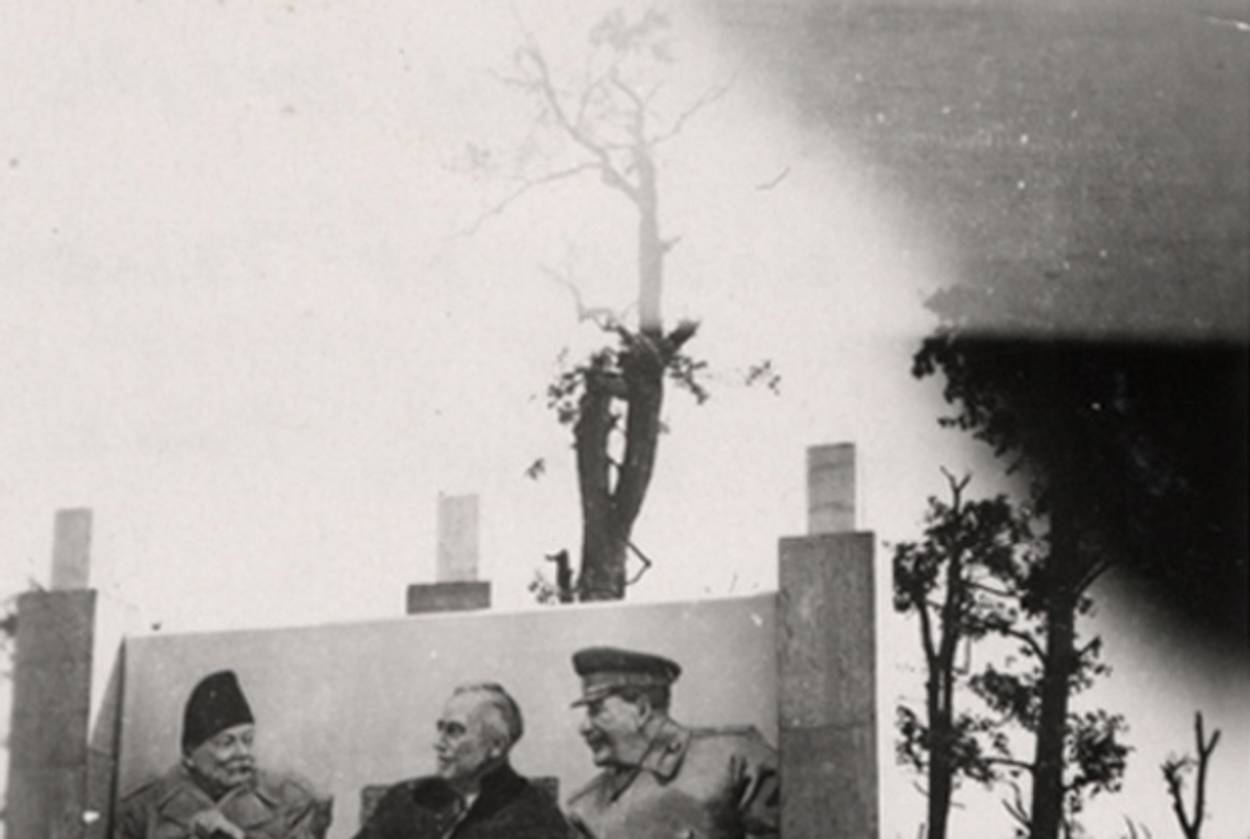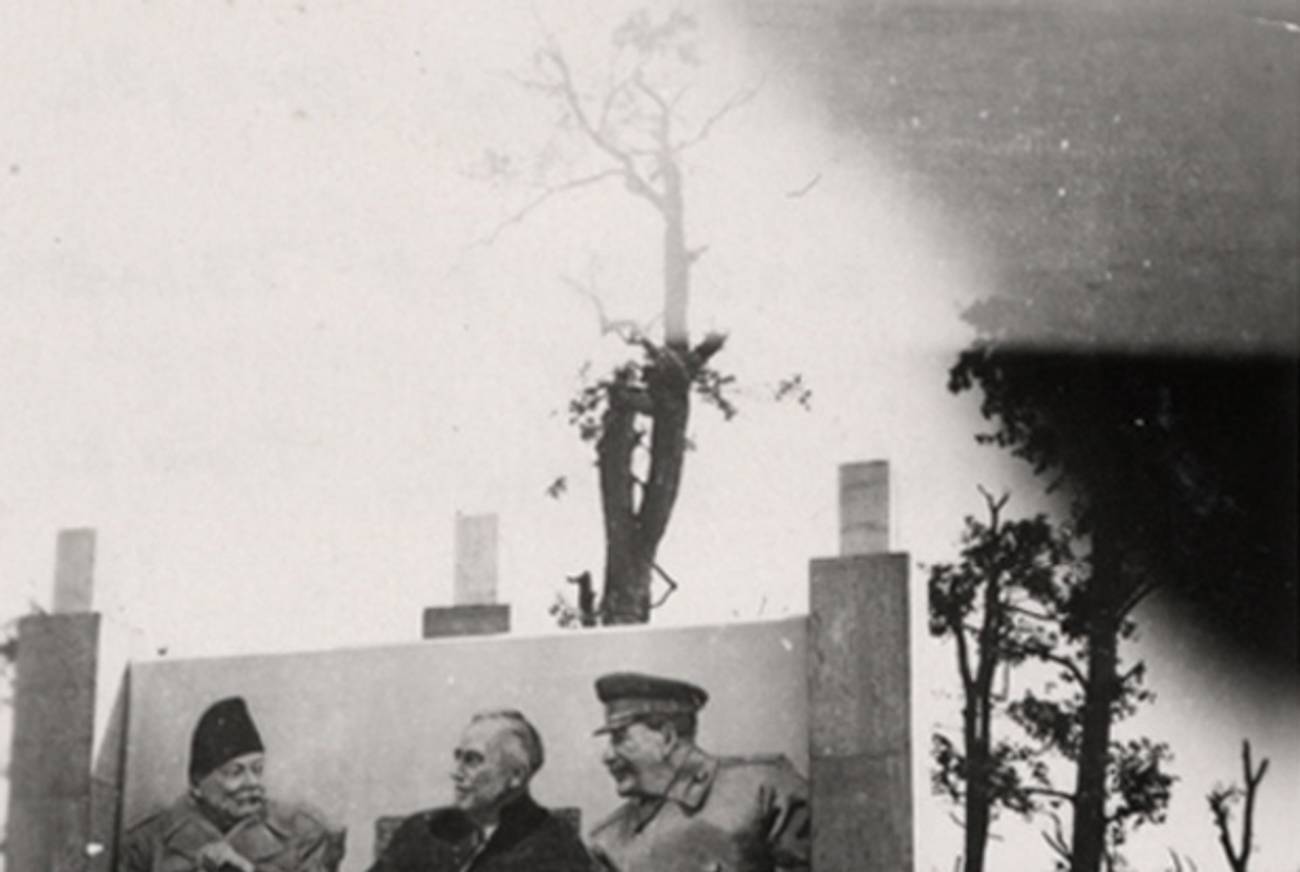Revealed
A new English-language translation of the short stories of Soviet writer Der Nister, or The Hidden One, brings his enigmatic Yiddish work to light




Der Nister—which means “the Hidden One,” a name that impels readers to seek the author in his literary creations—was the nom de plume of Pinkhes Kaganovich, who lived from 1884 to 1950. Born in Berdichev, Ukraine, he initially began writing in Hebrew, but it was in Yiddish literature that he made a lasting impression on contemporary Yiddish writers and critics. Der Nister’s wartime short stories—recently published as Regrowth: Seven Tales of Jewish Life Before, During, and After Nazi Occupation, Erik Butler’s first English-language translation of the Soviet Yiddish writer—expose new readers to a harrowing response to loss and destruction by one of the Soviet Union’s most enigmatic Jewish writers.
Der Nister is best-known for his epic family-saga novel, Di Mishpukhe Mashber (The Family Mashber), written in the 1930s and during the war. In 1943, Der Nister published a small collection of short stories on the Holocaust under the title Korbones (Victims). Most of his wartime stories, however, were collected in book form only after his death: Dertseylungen un eseyen (Stories and Essays; New York, 1957) and Vidervuks (Regeneration; Moscow, 1969). He was arrested in February 1949 for overt nationalism and died in a labor camp of an acute blood disease on June 4, 1950.
Faithful to Der Nister’s kaleidoscopic literary style, Butler’s translation prompts readers to consider literary responses to the Holocaust within the Soviet Union, a topic fraught with tension both in Soviet and contemporary Russia. Der Nister’s heroes were often orphans—either children orphaned by the loss of their parents or parents orphaned by their children—who went off to fight with the partisans. For the heroes and Der Nister himself, loss and destruction fueled a sense of nationalism, messianism, and a re-awakening of Jewish allegiance. This motif of national rebirth subverted the master narrative of wartime Socialist Realism espoused by the Stalinist Soviet State.
Der Nister’s vision of rebirth is perhaps most readily apparent in his 1945 short story “Vidervuks,” or “Regrowth,” which explores a re-awakened nationalism engendered by loss and death. More literally, “Regrowth” is about “a man without a wife, and a wife without a man” who live “with facing doors, on the same floor of the same building, in a Soviet capital city.” The heroes of the tale, Dr. Zamelman and Mrs. Zayets, “have grown estranged from their Jewish origins and all that occurred in the thicket of their people.” The man and the woman share similar fates as both their son and daughter leave their homes in order to fight the Great Fatherland War. From the very beginning of the story we know that Dr. Zamelman and Mrs. Zayets’ fate is intertwined: Their doors face one another, they live on the same floor, and they both lose their children in the war. Toward the end of the story, Dr. Zamelman’s reconnection with the kehilla, or Jewish community, motivates him to adopt a young boy.
The figure of an orphan was a literary favorite for Soviet wartime fiction. Losing his biological parents in the war, the child had the full potential to be reborn—to claim his new Soviet family with Stalin as father. Valentin Kataev’s 1945 novel, Son of the Regiment, which won the Stalin Prize in 1946, tells the story of a young orphan who, upon enlisting in a partisan group, goes through a process of re-awakening. By the end, the boy realizes his full political self-awareness as Stalin visits him in his dream. Kataev’s equally revealing 1951 novel, For the Power of the Soviets, tells a story about an orphan who joins a partisan group. The narrative ends with the young boy listening to Stalin’s Nov. 1943 speech on the radio. Unlike Kataev’s heroes, for whom loss stimulates the hero to gain political awareness, Der Nister’s orphans join partisan groups in order to avenge the deaths of their Jewish parents.
“Regrowth” ends with a union between Dr. Zamelman and Mrs. Zayets, which brings the characters closer not to their Soviet homeland but rather to their Jewish heritage. Throughout the story, Dr. Zamelman awakens from several dreams. We may read this literary trope as another example of revived nationalism.
The tension between the individual Soviet Jew and the collective is addressed in “Rive Yosl Buntsies,” a story about a woman who loses both her father and husband. Rive, we are told, “was a marvel—a kind of historical relic—to be displayed in a museum.” The author’s acute awareness of destruction haunts his characters. Rive’s appearance in the story is always in the context of the community. She is present at births, marriages, and deaths. Before dying, Rive’s father gifts her candlesticks, which “served her both as a remembrance of what she had lost and as a guide for her everyday thoughts.” So important are the candlesticks for Rive that, when her life is interrupted by the arrival of the Nazis, she takes them with her to the ghetto. The story ends with Rive being led by Nazi SS soldiers to her death. She walks alongside a group of women; recalling that it is Friday, Rive leads the women in a Sabbath prayer. The tale ends with a Nazi police officer relieving “himself on the candles—whether for the sake of his personal needs or in order to share something with others—it’s all the same.”
The image of light, which is replete with multiple meanings in the narrative, reaches its apex in this chilling moment of desecration. The Hebrew phrase, “or l’goyim,” or “light for all nations,” originated from the prophet Isaiah. Der Nister’s conscious allusion to this expression reveals the author’s grappling with the loss of an entire nation and by extension, a moment of darkness for humanity.
Der Nister’s wartime nationalism was accompanied by an equally powerful call for vengeance. Der Nister explores the theme of vengeance in stories such as “Heshl Ansheles” and “Flora.” In “Heshl Ansheles,” vengeance is packaged in moments of acute violence and rage. Humiliated by Nazi soldiers, Heshl Ansheles, who is respected for his immense knowledge and ability to abstract from the biblical canon, bites off the finger of a Nazi policeman. His mouth filled with blood, Ansheles, “full of contentment,” closes his mouth with satisfaction.
Unlike “Heshl Ansheles,” which recasts Jewish national revival through madness and rage, “Flora” reveals the power of language as a form of resistance. “Flora” tells a story about a young girl who, upon losing her father and being thrown into a ghetto, joins an underground group of partisans. Initially told by Flora herself, the narrative abruptly ends and is picked up by a professional narrator. “There ends Flora’s record,” writes this second narrator. “And it is also understandable why: she went off to where there was neither room nor time to hold a pen in one’s hands—just a chance for something better: a rifle.” The author here makes a conscious play using the sounds of the Yiddish word for book, “bukh,” and the word for gun, “biks.” The rifle is the logical extension of the pen.
The Hidden One makes occasional brief appearances in his texts in the guise of a man “hidden among a crowd.” Uncomfortable in any one circumscribed space, this figure finds solace in the space in between things. In the famed short-story “Under a Fence: a Revue,” the protagonist is lured by a “dustman,” who resides “within walls.” In “Flora,” the father gazes lovingly upon his daughter “as always, hidden in a crowd.” In his Holocaust works, we may discern the author in the character of the Messiah who lingers in the ghetto vicinities. There, he is present as “a rider on a poor donkey headed toward Jerusalem,” who imparts meanings into the world of destruction by ushering in the messianic epoch. Der Nister’s subtle yet bold process of articulating a difference by manipulating vocabulary, literary tropes, and dominant rhetoric forges a path between acceptance and resistance.
The author’s penname, “The Hidden One,” features an additional layer of irony: Since his death, he has remained virtually unknown to both the Russian and American reader. In Butler’s translation, the strength and importance of Der Nister’s work is clearly revealed.
Naya Lekht is a doctoral candidate in the department of Slavic languages and literatures at UCLA.
Naya Lekht is a doctoral candidate in the department of Slavic languages and literatures at UCLA.